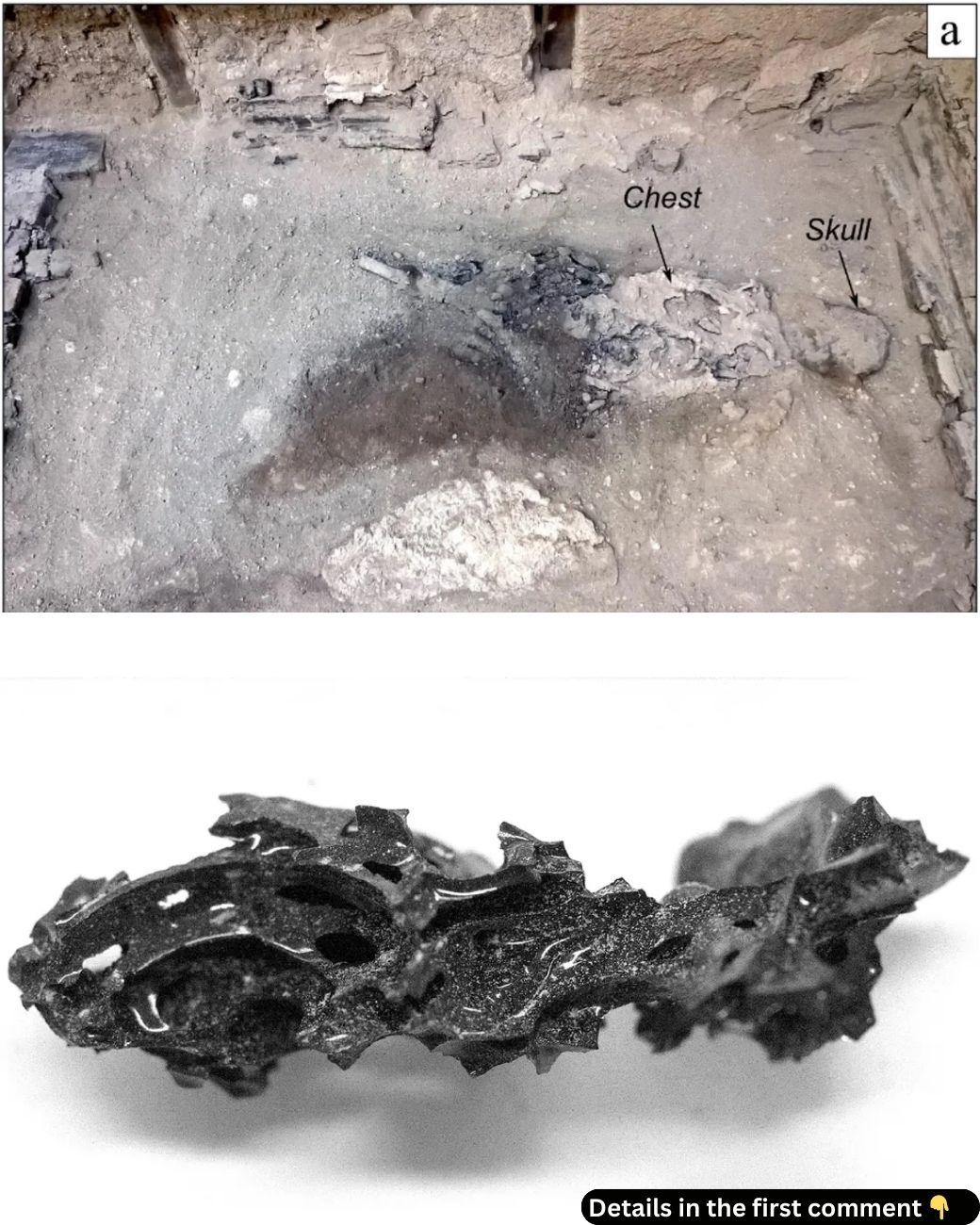The eruption of Mount Vesuvius in 79 CE remains one of the most catastrophic events in ancient history, burying the Roman cities of Pompeii and Herculaneum under layers of volcanic ash and pumice. While the tragedy resulted in thousands of deaths, it also led to the preservation of invaluable archaeological records. Among the most puzzling discoveries from this eruption is the case of a young man found in Herculaneum whose brain appeared to have transformed into glass. For decades, this discovery sparked heated debate, but recent research may have finally unraveled the mystery of the “glass brain,” offering insights into how the extreme volcanic conditions caused this extraordinary transformation.
The Uncovering of the Remains in Herculaneum
The discovery of the man’s remains, lying on his bed in the Collegium Augustalium in Herculaneum, was made in the 1960s. At first, the discovery seemed ordinary enough, but further examination revealed something extraordinary. Within the skull, archaeologists discovered fragments of what appeared to be a black, glass-like substance. Initially, this substance baffled scientists, as no one could comprehend how human tissue could be preserved in such a state.
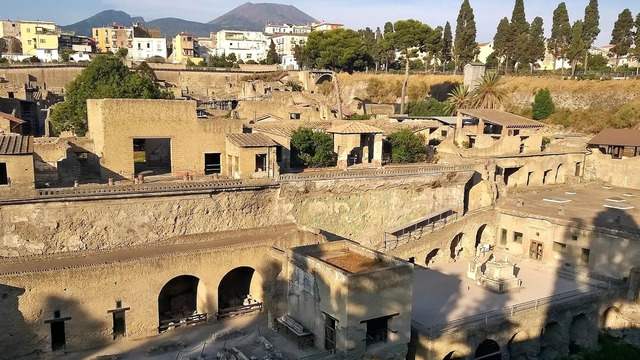
The city of Herculaneum had been devastated by the eruption, and its residents were quickly overwhelmed by pyroclastic flows—fast-moving currents of gas and volcanic debris. However, the man’s remains were different from the rest, showing an unusual preservation state that seemed almost impossible to explain.
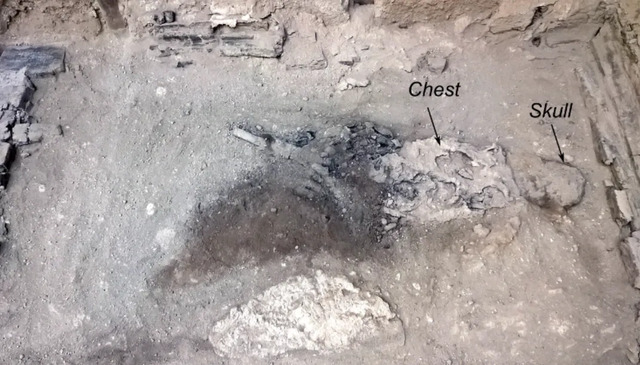
Video
Check out the video on the terrifying volcanic eruption that turned human brains to glass in Pompeii – it’s a chilling and fascinating secret!
New Research on Vitrification and the “Glass Brain”
After years of debate, a breakthrough study led by Guido Giordano, a geologist and volcanologist from Roma Tre University, shed new light on the mystery. The study, published in Scientific Reports, proposed that the man’s brain had undergone a process called vitrification, where organic material turns into glass due to extreme heat and rapid cooling.
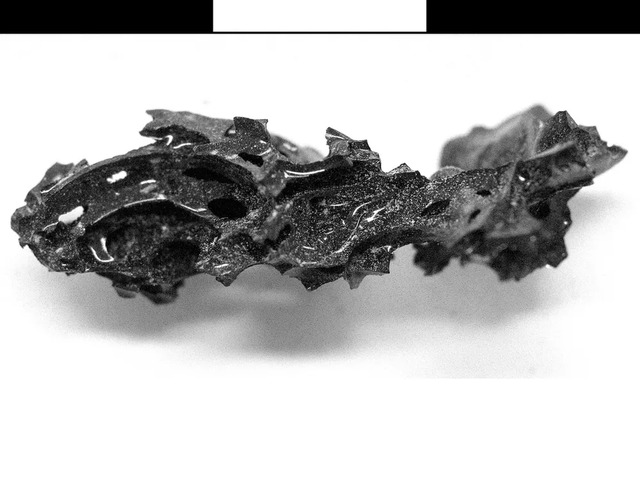
Giordano and his team hypothesized that, before the pyroclastic flows that would have baked the man’s remains, a superheated ash cloud—reaching temperatures exceeding 510°C (950°F)—engulfed Herculaneum. This intense heat was enough to liquefy the man’s brain, and the rapid cooling that followed led to the formation of glass. This theory has provided the first plausible explanation for the “glass brain,” adding an intriguing layer to the catastrophic event.
The Role of Superheated Ash Clouds
One of the crucial aspects of Giordano’s theory is the involvement of superheated ash clouds. While pyroclastic flows are often associated with volcanic eruptions, they might not have been the primary factor responsible for vitrifying the brain. Instead, Giordano suggests that the ash cloud—which was a part of the larger pyroclastic event—created the necessary conditions for vitrification. The cloud, traveling at high altitudes, had a much higher temperature and dissipated rapidly, causing the sudden transformation of the brain into glass.
Giordano’s team compared the events at Herculaneum with other volcanic eruptions, such as the 1991 eruption of Mount Unzen in Japan and the 2018 eruption of Fuego volcano in Guatemala, both of which involved superheated ash clouds. This comparative analysis further supported the theory that such ash clouds can produce the necessary heat for vitrification.
Vitrification Process and Its Evidence
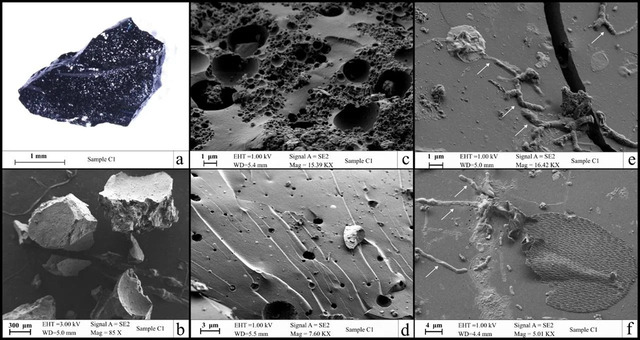
For a long time, the idea of soft tissues turning into glass seemed implausible, as scientists have always known that glass formation requires very specific conditions. When the temperature rises sharply, organic material typically burns or turns to charcoal, not glass. The key to understanding how the brain could turn into glass lies in the rapid cooling process. In Giordano’s study, the team analyzed charcoal fragments found near the man’s remains, which displayed clear signs of rapid heating and cooling. These findings, alongside advanced imaging techniques like electron microscopy, provided convincing evidence that the glass-like material in the skull was indeed brain tissue.
The preservation of the brain’s microstructures—such as nerve cells and axons—was crucial in confirming that the vitrification had occurred. The glass formed around the brain cells in such a way that the cellular structures were intact and preserved, allowing for the detailed study of the brain’s composition.
Why the Brain Survived, but Not Other Tissues

A fascinating aspect of this discovery is why only the brain seemed to survive the eruption in such an exceptional state. Giordano and his team proposed that the skull itself played a significant role in protecting the brain. The skull likely shielded the brain from the full force of the heat, while the surrounding tissues, including bones and soft tissues, were destroyed by the extreme conditions. This protection, coupled with the rapid cooling of the ash cloud, allowed the brain to survive in its glassified form.
The vitrification process, however, was not enough to preserve other parts of the body. The rapid temperature change would have destroyed the rest of the soft tissues, including muscles and skin, while the bones, though buried under the volcanic material, did not undergo the same preservation process as the brain.
Opposition and Skepticism: Are the Glassy Fragments Really Brain Tissue?
Despite the compelling evidence presented by Giordano and his team, some experts remain skeptical about the findings. In 2020, forensic anthropologist Alexandra Morton-Hayward questioned whether the glassy material truly originated from the man’s brain. Her research suggested that the pyroclastic flows in Herculaneum may not have been hot enough or cooled rapidly enough to cause vitrification.
Furthermore, Morton-Hayward raised concerns that independent researchers were unable to analyze the samples from the man’s skull, which she argued could have provided further clarity. Despite this, Giordano’s study offered new evidence that supported the notion of brain vitrification, making a significant contribution to the ongoing debate.
The Cultural and Scientific Significance of the Discovery

The discovery of the glassified brain has profound implications for both scientific and cultural understanding. For scientists, this is the first known case of natural vitrification of brain tissue, challenging previous assumptions about the preservation of organic material under extreme conditions. This discovery also opens new avenues for studying the effects of volcanic eruptions on human remains, shedding light on the catastrophic events of 79 CE and their impact on the people of Herculaneum.
From a cultural perspective, this finding humanizes the tragedy of the eruption, offering a glimpse into the final moments of a man who, like many others, perished in the volcanic disaster. His remains, preserved in such an extraordinary manner, continue to tell the story of the people who lived through one of history’s most infamous eruptions.
Video
Watch the full-length animation “A Day in Pompeii” – it’s a captivating portrayal of the ancient city’s final moments!
Conclusion: A Scientific Mystery Still Unfolding
While the discovery of the glassified brain has provided a new perspective on the eruption of Mount Vesuvius, the mystery is far from solved. Experts continue to debate the specifics of the vitrification process, and further research is necessary to fully understand the phenomenon. However, one thing is clear: this discovery has changed the way we think about ancient volcanic disasters and the preservation of human remains.
As scientific techniques continue to advance, we may uncover even more extraordinary findings that shed light on the lives and deaths of those who lived during the time of the Roman Empire. The glass brain of Herculaneum stands as a testament to both the destructive power of nature and the resilience of the human spirit, preserving a story that has captivated researchers for decades.
